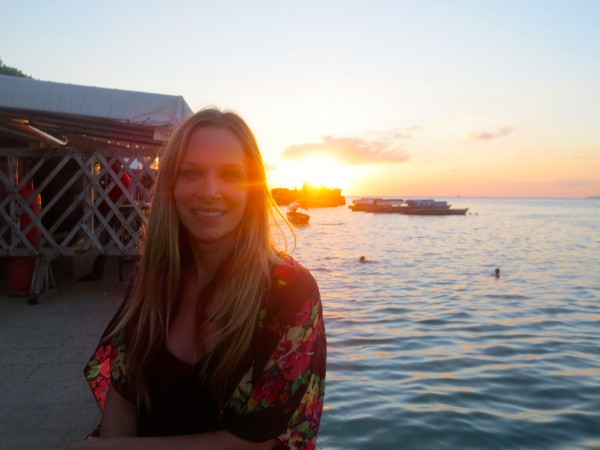After five wonderfully life altering nights of adventure in the Maasai Mara, Peter and I sadly left the bush and flew back to civilization. We had a few hours at Nairobi Airport before flying South to Tanzania and its island of Zanzibar.
For Peter, Zanzibar had been a bucket-list destination for many years. This tiny island had such a rich and beautiful history with a global cast of occupiers such as the Portuguese, Omanis and the British. In the capital of Zanzibar, Stone Town, you can feel pieces of each of these cultures mixed together along with its African roots to create a magical place like no other. The people, the architecture, the religion, the clothing – its a mash-up of these very different cultures, interpreted in unique ways over the centuries that can only be described as Zanzibar. Its as exotic as the island’s name.
Peter’s late business partner, Tod, had embarked on a trip to South Africa and Tanzania a year before his death in 2013. He never recognized it as such, but with his late stage cancer, it was unspoken that he wanted to get back to the continent he loved one last time. Peter and Tod shared a passionate interest in historical Zanzibar and Tod set foot on the streets of Stone Town on that farewell trip. His emails back to Peter were dreamlike and he highly encouraged (almost insisting) Peter to make it to Zanzibar soon, and more specifically to stay at the Mashariki Palace in the heart of Stone Town.
So of course we checked into the Mashariki Palace where Tod had stayed.
Peter had a clear mix of excitement, nostalgia and mourning. Tod had sent many pictures to Peter from Stone Town over email and we were able to retrace some of the footsteps he took. We tried to keep things light as we knew Tod would be shaking his head if we mourned instead of enjoyed the richness of Zanzibar, but it was hard to deny or ignore his energy presence in Stone Town.
Tod, you are still dearly missed.
The great thing about the Mashariki Palace Hotel was its historical significance as it was built by the first Sultan of Zanzibar over 200 years ago under Omani control. It is said that it was one of eight homes that were interconnected to form the Sultan’s palace. The hotel is where the Sultan’s religious councilor lived and had been restored to an authentic Arabic feel.
We were in Oman a week prior to Zanzibar so the historical ties and storyline were mixing well with our travel itinerary. We both felt pretty smart citing Omani and Tanzanian history ties and realizing that a few months prior we had also visited the third and fourth occupying force of Zanzibar: the Portuguese and the British. No education like experience.
Each morning we would enjoy a rooftop breakfast at the hotel where we could stare out to sea and daydream about the ships, garrisons, sailors from all corners of the globe, countless wars and a thriving spice trade that all took place in the waters in front of us.
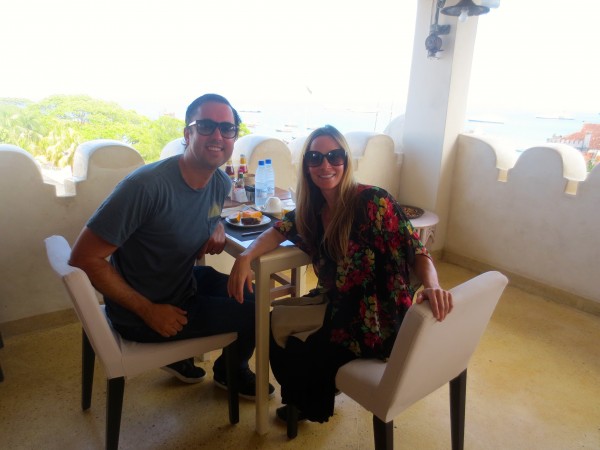
Like so many places in Africa, there was a startling contrast observed from the roof. When you looked left you could see crystal blue sea and air-conditioned building. To the right, thrown together housing with locals living in poverty.
From the left.
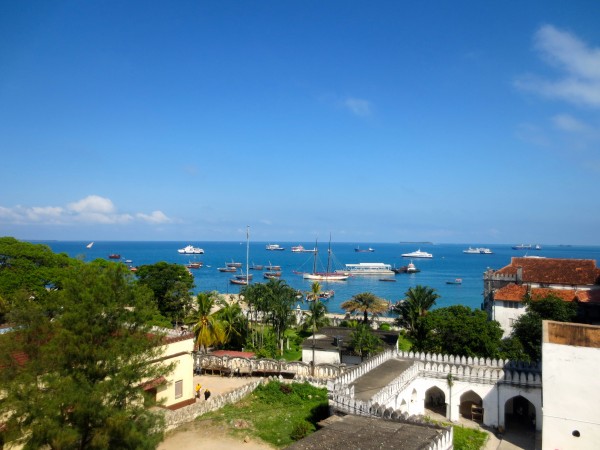
From the right.
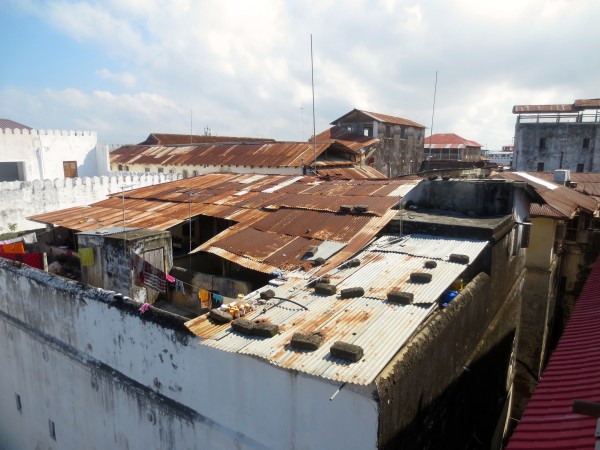
And panoramic.
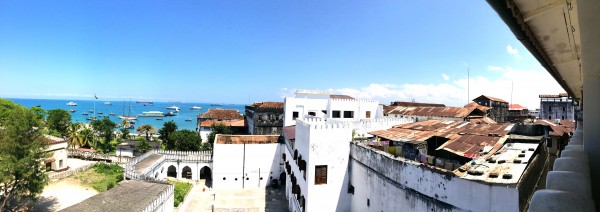
Our first evening we did a self guided walking tour of the city through narrow winding alleys and passageways. It was an assault on the senses of stone-washed sights, poignant unwanted smells, and the now familiar sounds of the competing call to prayers from all the Stone Town’s minarets. It was Afro-Arab in a tropical Southern Hemisphere setting and couldn’t feel more unique. It couldn’t feel more special.
For dinner we took the recommendation of two separate travelers and enjoyed a rooftop dinner at Emerson Spice Hotel which offered us a five course set menu, panoramic sunset views, and a nice breeze in a wonderful setting. Zanzibar can be unsafe at night so the Emerson Spice Hotel Restaurant offers accompanied walks back to your hotel after dinner. We politely declined and thankfully so as we stumbled upon a lively outdoor bar where locals were dancing to hip-hop music videos projecting onto a huge screen. There were also a number of picnic tables scattered around the outdoor venue and sheesha being served. We had a blast.
The next morning we spent our day on a city tour with one of the best guide’s of the year.
It was a walking tour and included historical discussions and explanations of a number of landmarks by one of the smartest intellects we had come across in our travels.
House of Wonders
It was built in 1883 and was formerly the Sultan’s residence. The most well know landmark in Stone Town situated by the sea.
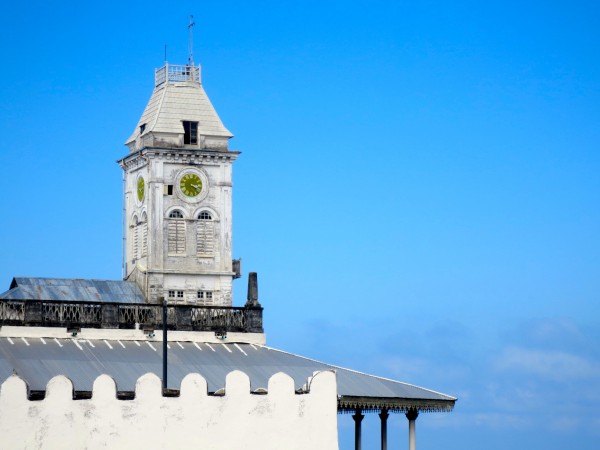
Sea Front Walk
One thing that struck me was the magnificent blue of the ocean. It was a blue that captures and locks your eyes till you feel lost in the sea of it. This was my first time seeing the Indian Ocean in East Africa and it captivated me. Stone Town is also known for its huge tide swings which displaces and replaces over 13 feet of ocean every day.
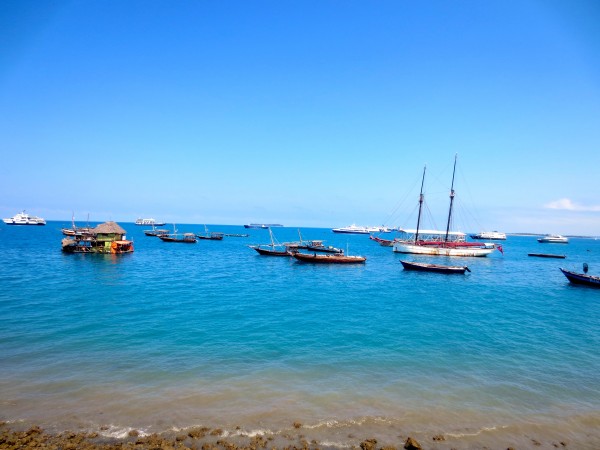
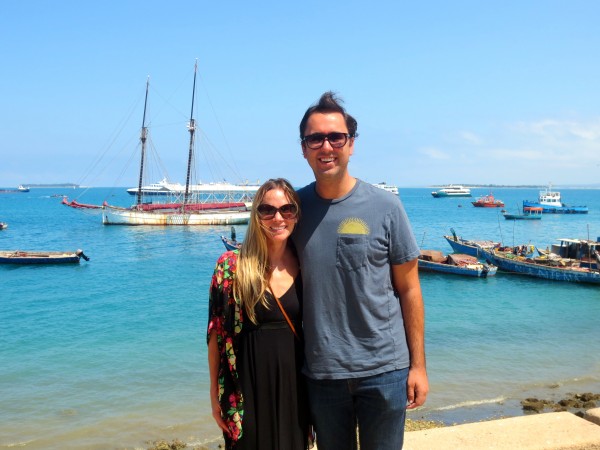
Old Fort
Located next to the House of Wonders. It was built in the late 17th century by the Omanis to serve as protection against outside forces. It later became a prison. It is now used for local merchants to set up shops.
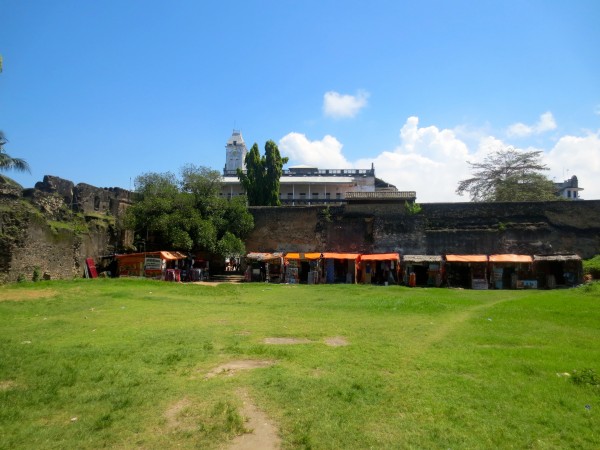
Darajani Market
Built in 1904 this market is where the locals come to buy, sell, trade, and socialize. Upon entering we were taken by the loud screaming-match taking place in the next room. Our guide insisted we walk into the shouting storm only to find a gathering of men and women huddled around fish. The yelling was bartering and bidding in an auction style right there on the floor.
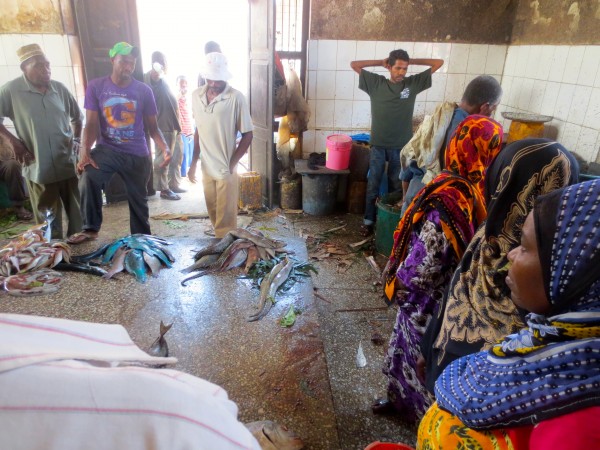
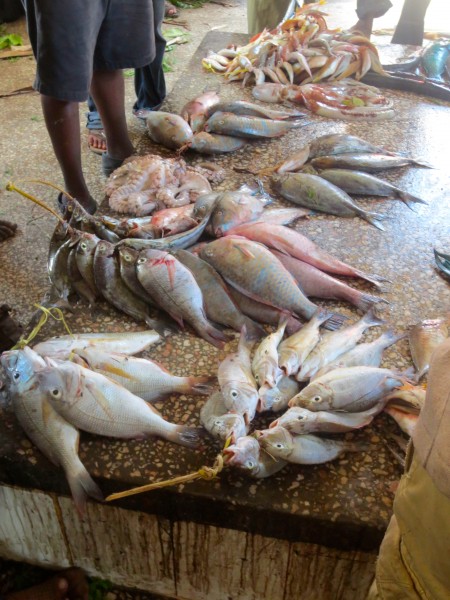
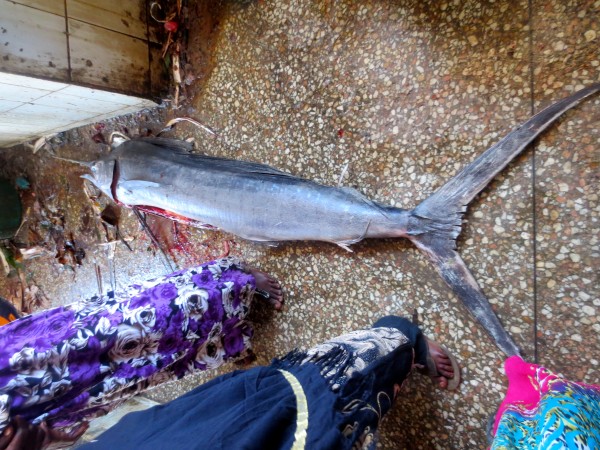
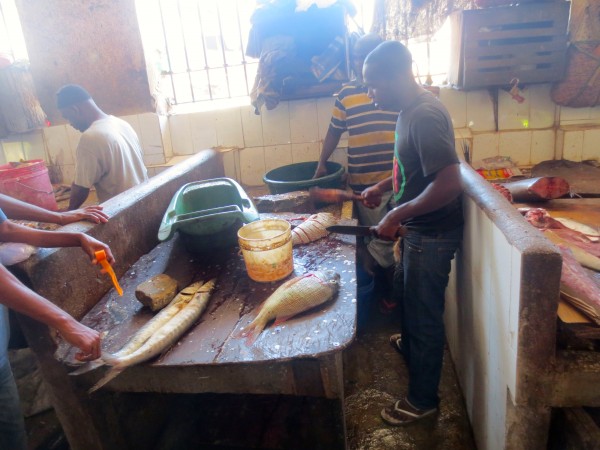
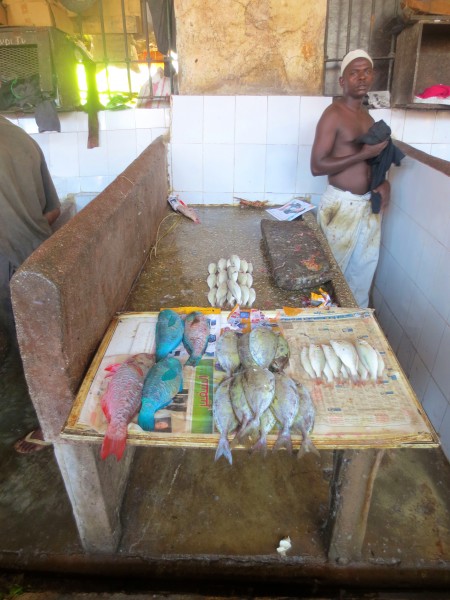
Next was the meat market section. If you are vegetarian these pictures are not for you. We saw all kinds of hanging meats, hides, bones and even a cow head. The eyes of the latter being a delicacy, so we were told. The smells were pungent, the sights unpleasant and the flies were endless. The experience made me deeply examine my current eating habits.
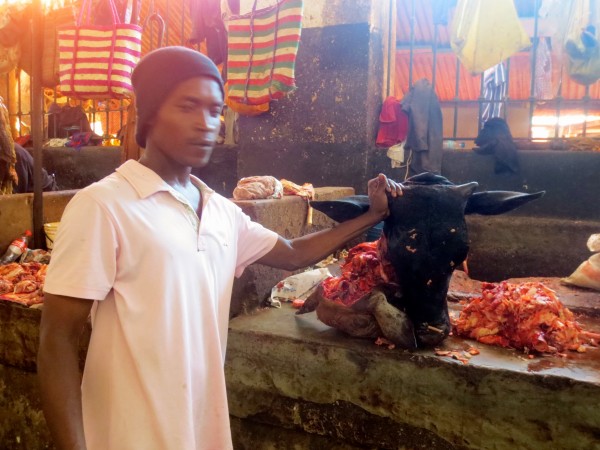
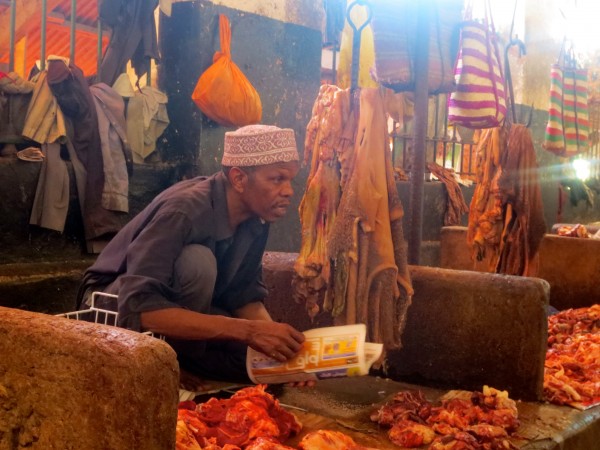
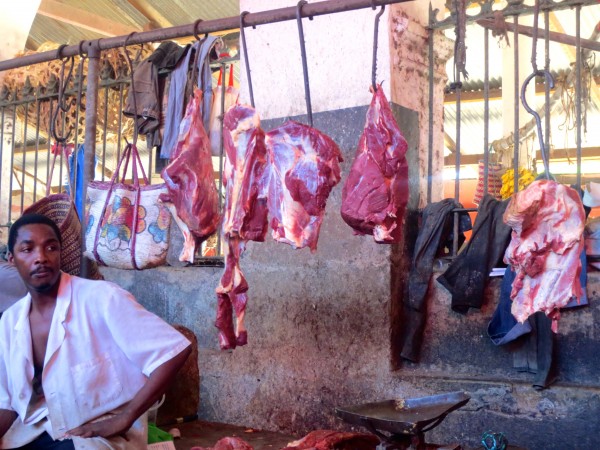
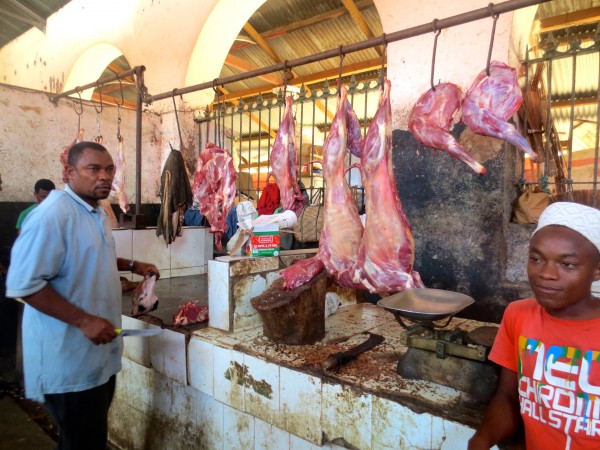

The market also sells fruits, vegetables, nuts, spices and even electronics. We saw the biggest avocados known to man.
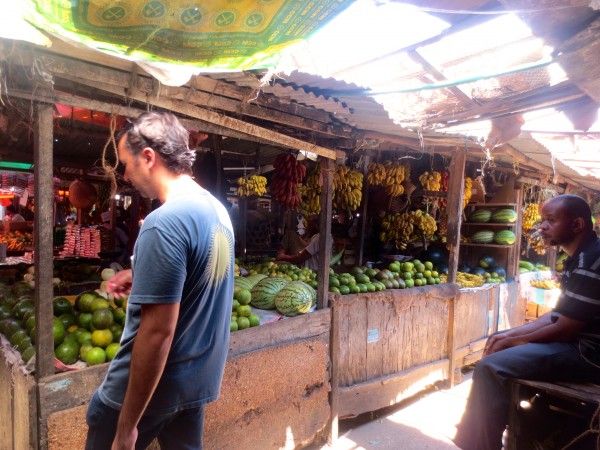
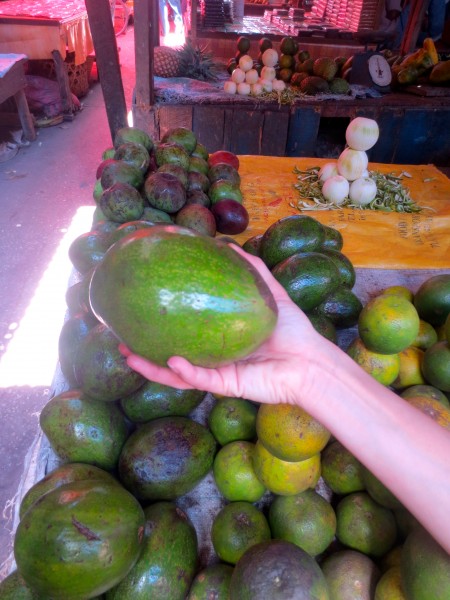
Part of the tour discussed the blended architectural designs of the building, doors and the local politics that are segmented per neighborhood block. So much history, culture and happenings in such a small narrow space. The burned buildings and electrical wiring were also interestingly presented.
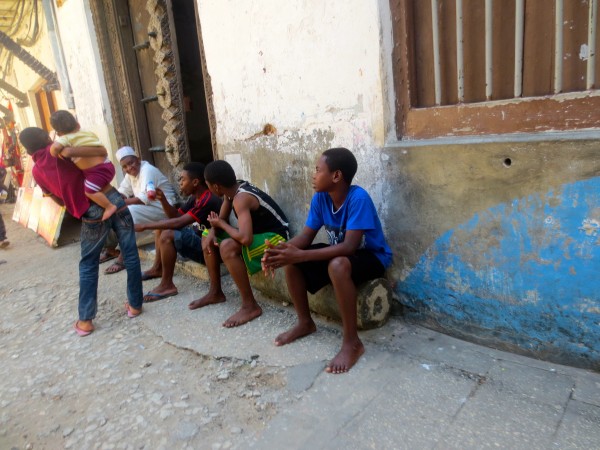
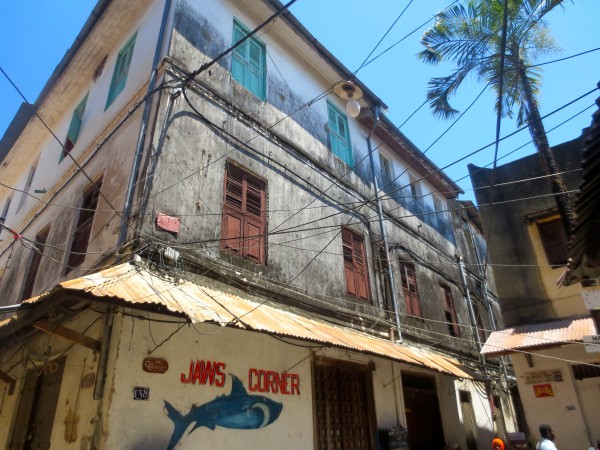
We also learned about the significance of doors. Doors to homes hold intricate designs and tell the story behind the home’s residents. If there were designs of ropes that meant the household was involved in slave trade. Flowers represent a family home. Some doors also have spikes which are to ward of elephants. Pretty rad.
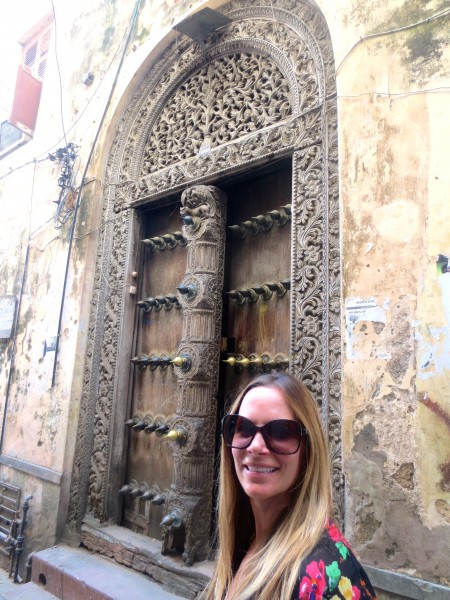
Our tour ended at the Slave Memorial.
During the Omani rule, slave trade was a major economic driver. Slaves were brought into Zanzibar and sold to Middle Eastern countries. The slaves were brought to the chambers where they were kept before they were sold. There were two separate areas where people were held for days before being sold into slavery. One area held around 50 men per day and the other held 75 women and children per day. The conditions were so terrible that many suffocated or starved prior to being sold.
In the middle of the chambers was a channel that was used as a toilet. When the tide came in the ocean rose to a level where the chamber would be flooded up to 2 feet which lifted up the human waste before the tide would drop and “clear” out the toilet. Although on lower tide swings the channel would not be cleared therefore the human waste was left in the chamber.
Those that didn’t die were whipped and then sold into slavery. Those that cried and screamed the least were sold for the highest price because it was thought they would work the hardest. Such a disgusting, horrible, and dark part of history. During the 1800′s Dr Livingstone, the Scottish explorer, proposed and fought to abolish slave trading in Zanzibar and was successful to seeing an end to this on June 6, 1873. Today The Anglican Cathedral Church of Christ is built on top of where the slave market once was with the alter being placed in the exact spot of the whipping post.
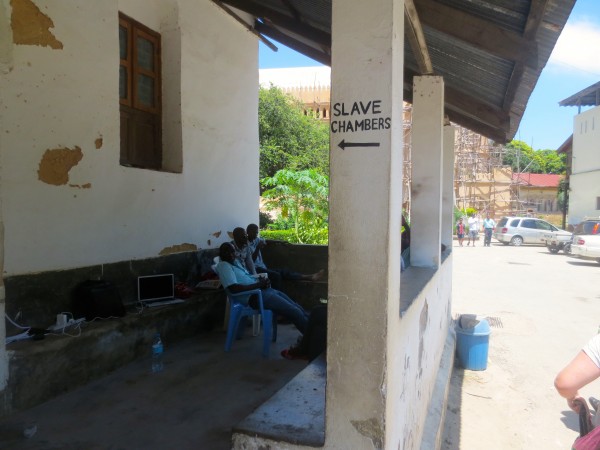
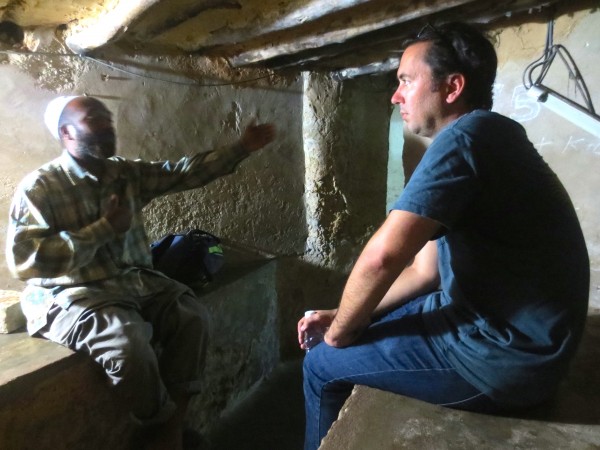
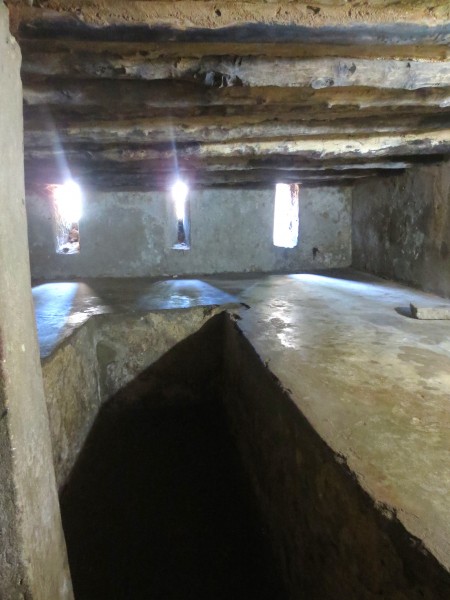
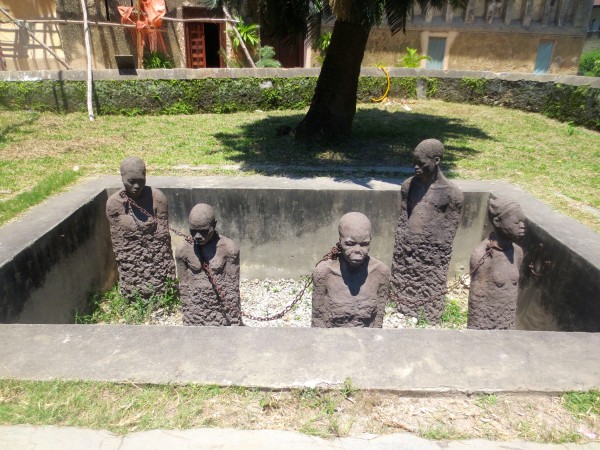
Our guide concluded with a discussion on what he described as modern day slavery.
He shared with us a real life story about what had happened to him as well as other local men in Stone Town.
Business people and other affluent foreigners come over from areas like United Arab Emirates and Saudi Arabia that have booming economies and little to no working local class. These business people make promises of competitive salaries, living accommodations and the dreams of a better life if they take an overseas job in their country. With few job opportunities in Zanzibar, a lot of people accept the jobs and board the plane to the Middle East.
Once they arrive, their passports are confiscated by their employer and they are put into slave-like conditions working slave-like hours on slave-like wages. All the promises are dismissed and hell-like living is realized. Stuck without a passport, money to buy a ticket, or any assistance group in these countries for overseas workers, they are trapped. They are enslaved.
Our guide went to work in Dubai with his brother. Once he arrived his expected job as a pharmacist was exchanged for grueling construction work from 4am – 9pm every day in the desert heat. The agreed upon $1,000/month stipend evaporated faster than his passport and he was compensated $180 per month, an unthinkable amount to live in the Middle East. In a story that deserves its own novel, our guide was able to get his passport back, borrow money for a plane ticket and snuck to the airport and escaped back to Zanzibar. Today, he spends a lot of his time educating other locals about the dangers of this modern day slavery.
Feeling a bit drained and saddened by the stories of past and current slavery we walked to the ocean front to take in the last moments of the sun before it disappeared into the Indian Ocean.
The liveliness of the day was palpable as hundreds of people took advantage of the small window of time where the sweltering heat calms and the last moments of daylight are still present. Our moods lifted as we watched young boys partaking in an early evening ritual. This ritual consisted of each boy taking turns cooling off from the humid air of the late day by diving into the ocean. Each time a boy would try to outdo his friend with a unique technique, twist or flip. This ritual continued for at least an hour until right before the call to prayer rang throughout the city when the boys scurried off to the mosque close by to give praise to the day. You could hear the boys laughing and comparing jumping techniques, each wanting credit for their dives all the way to the mosque. It was so much fun to see their competitive good natured spirit and pure joy of a simple activity done in brotherhood.
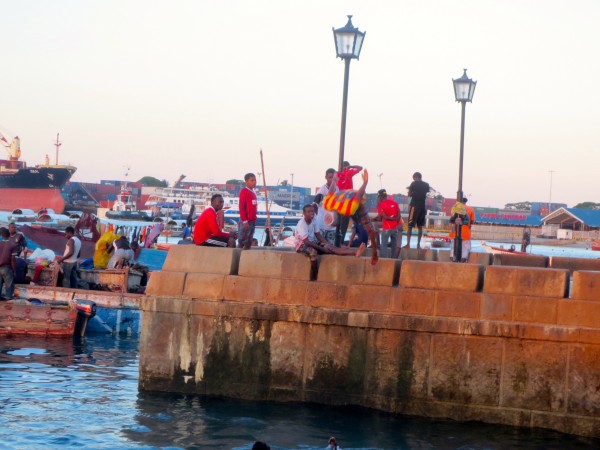
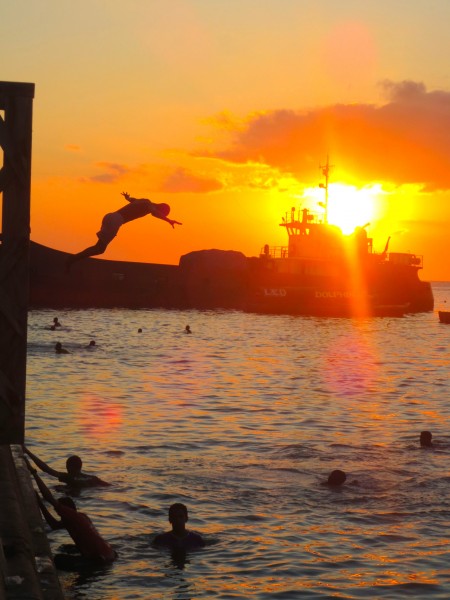
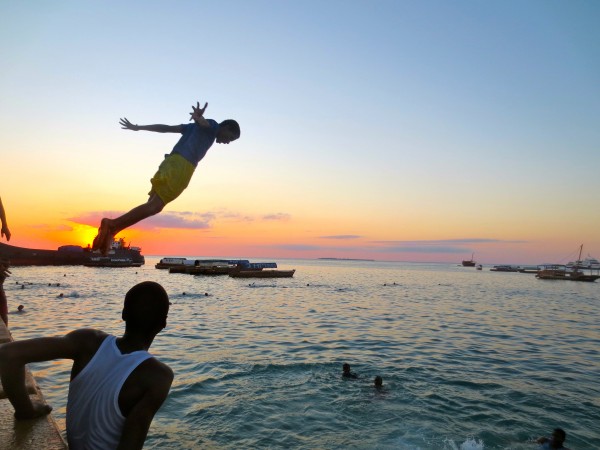
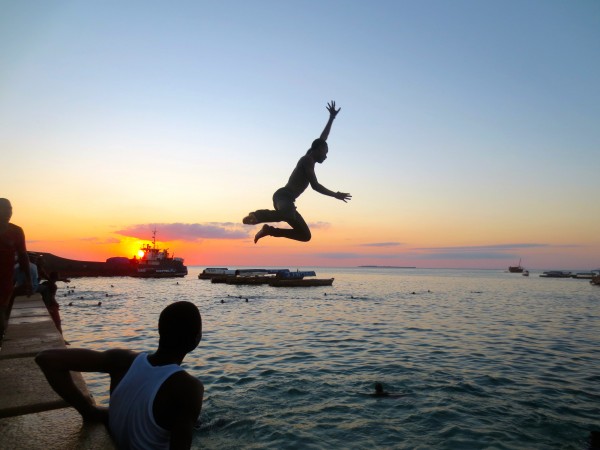
Our last night in Stone Town we dined at and Indian restaurant, The Silk Route, where I indulged in what has remained one of my favorite meals from all our traveling, an over the top delicious prawn curry. I’ve ordered Indian prawn curry since then and nothing has competed.
While we were in Stone Town we received some wonderful and exciting news from our dear friends, Andrea and Joe. They got engaged! We were overjoyed. They opted for a short engagement and had a date set for March. Since this was late November in Zanzibar we were thrilled to not only be heading home for the holidays to see friends and family, but now we had an excuse to celebrate with our good friends. One of the hardest things about being away from home is missing the big events. In this case we weren’t going to miss this for the world…literally.
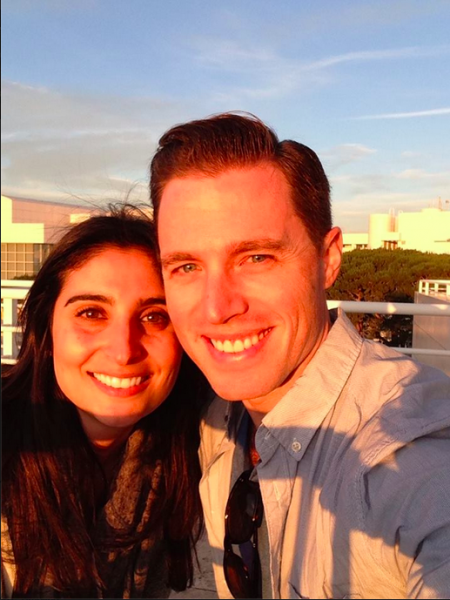
Another fun thing coming up was my birthday. It is tradition for Peter to surprise me with a birthday location. The first surprise was Maldives. The second Puerto Rico. This time I was really stumped. I had a couple guesses, such as wine-tasting in South Africa, that seemed less and less logistically possible the further South and East we traveled in Africa. Stay tuned for my next entry to find out where Peter took me to celebrate.
Thanks for reading about our world travels. I’m grateful every day that Peter and I get to do this.
